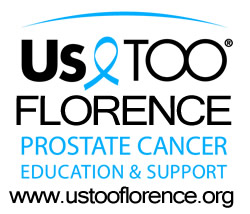|
||||||||
| Home | News You Can Use |
About Us TOO Florence |
Personal Journeys | Slideshows | Contact Us | |||
Events News you can use Treatments |
Us TOO FLORENCE - BEHIND THE HEADLINES-1 BY BOB HORNEY - PROSTATE CANCER SURVIVOR - Us TOO CHAPTER LEADER (Published September 11, 2013, The Siuslaw News) The month of September is all about highlighting an awareness of prostate cancer, which, according to Us TOO International, is the most frequently diagnosed cancer in American males today and the second leading cause of cancer death in the United States. The American Cancer Society (ACS) predicts 238,590 new cases of prostate cancer in 2013 and 29,720 deaths from the disease. Prostate cancer is 28 percent of new cancer cases, but only 10 percent of cancer deaths. That certainly looks like most prostate cancer is being diagnosed while curable. Using ACS numbers, we find that 93 percent of new prostate cancer cases are diagnosed at local or regional stages. Over the past 25 years, five year survival has gone from 68 percent to nearly 100 percent. Even the 10 and 15 year survival rates are 98 and 93 percent, respectively. According to the National Cancer Institute (NCI) SEER data, in 1992 the age-adjusted prostate cancer mortality rate was 39.3 per 100,000 males. By 2010, the age=-adjusted rate had fallen to 21.8 per 100,000 males. With the US male population having grown from 131 million men in 1992 to over 150 million men in 2010, the decrease in age-adjusted mortality amounted to thousands of lives saved each year. NCI reports that 45 to 70% of the reduced mortality could be attributed directly to PSA screening. No test for any other cancer can come close to the benefit PSA screening has had on prostate cancer detection, curative treatment and lives saved. Of course, there are the critics of PSA screening. Their criticisms are...in a nutshell: over-diagnosis, over-treatment and harms...diagnosis of a cancer that would never kill the man (over-diagnosis), he gets treated anyway (over-treatment) and ends up with incontinence and/or impotence (harms)...for a cancer that never would have killed him. Since there is no way to guarantee that a low risk cancer will always remain low risk, the critics are asking US to take all the risk - with OUR lives - not theirs. Quite deceptively, critics are also relating the side effects of treatment to the very act of being screened. Screening IS NOT treatment. Those of us diagnosed as a result of screening know that screening doesn't cause the incontinence and impotence that the critics complain about. Unfortunately, by consistently combining their "harms" of treatment with screening, critics have been a driving force behind screening guidelines that range from no screening at any age to no screening until about age 55, too late for too many men. Here's where we at Us TOO Florence speak up! We haven't been attending Us TOO Florence meetings and gleaning information from Dr. Bryan Mehlhaff for 9 years and Dr. Doug Hoff for 2 years for nothing! And, we have personally experienced the upside of asymptomatic diagnoses from screening and have witnessed the downside of symptomatic diagnoses - being tested after developing symptoms. The former is life saving, the latter is usually not. Most of these critics are recommending that men, ages 40 - 55, forego screening and risk a symptomatic diagnosis and possible death instead of an asymptomatic diagnosis (with possible side effects of treatment - incontinence and/or impotence)) and LIFE. Our experiences show that by working with Dr. Mehlhaff, Dr. Hoff and other urologists at Oregon Urology Institute, we can be treated and have LIFE with minimal risk of irresolvable incontinence and impotence if our prostate cancer is diagnosed before symptoms develop. Asymptomatic diagnoses are the result of screening, not wishful thinking. So, flying in the face of the critics, Us TOO Florence stands firm in its recommendation that men at age 40 (or soon thereafter) should receive a baseline PSA/DRE/Comprehensive Risk Assessment. In the hands of a urologist, that is critical information which saves lives! Well over 100 of us with Us TOO Florence are living proof of that! |
| www.ustooflorence.org Copyright © 2010 - 2025 | |

